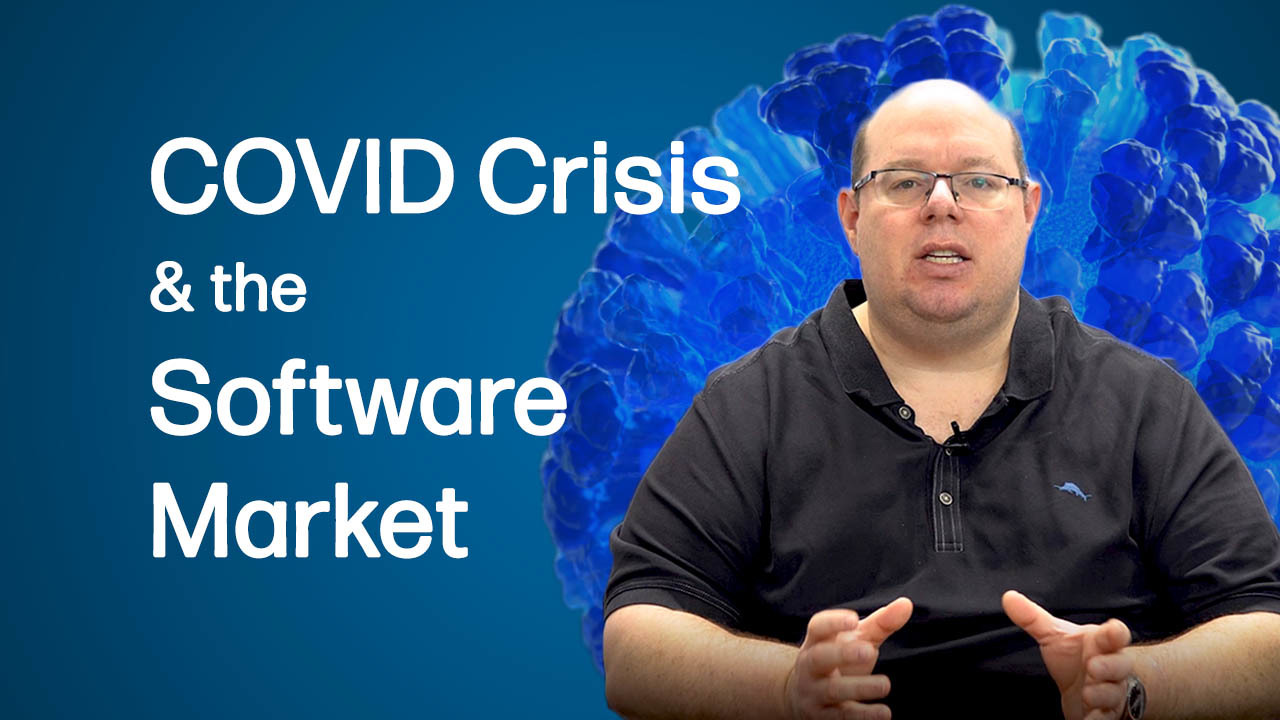Microsoft is Changing How it Negotiates EA Renewals:
Here’s What You Need to Know to Prepare
If you’re a part of a large company with at least 250 devices, chances are you have some sort of an Enterprise Agreement (EA) in place with Microsoft. The EA offers Microsoft products at reduced prices, gives you the opportunity to add licenses while paying (true up) later, and it allows an easy way to purchase online services such as Microsoft 365.
Given the right circumstances, this can prove exceptionally valuable and highly cost-effective. If you find yourself in the wake of a looming EA renewal, there are some recent changes that you should take into consideration before entering negotiations with Microsoft.
At Metrixdata 360, after over a decade of experience dealing with Microsoft, we have noticed a change in how Microsoft approaches these renewals that may make your renewal more challenging than they have been in the past. We’ve outlined the some of those changes to how Microsoft handles Enterprise Agreement renewals below.
Pressure to Move to the Cloud
While Microsoft’s Azure may not have as many features or as wide availability as Amazon’s Web Service (AWS), Azure popularity is skyrocketing, and its sales organization is highly motivated to push you to the Cloud.
Now, Microsoft has become quite aggressive in moving its business – and subsequently its clients – to the Cloud and away from traditional on-premise licensing. This means you can expect a lot of pressure from Microsoft to get you to sign up for some commitment to Azure and other subscription-based licensing models (Office 365, Security Products, Teams Voice Features, etc.).
The particular complication that Azure presents that we have often seen occurs when companies sign up for Azure services and find out that there are many hidden or unexpected costs that can quickly add up, making it difficult to predict what the total cost will be for your company. Services that are sold for only a few cents per minute could easily cost thousands of dollars when scaled.
A big indicator that points to Microsoft’s desire to move the Cloud comes in the form of traditional on-premise products often being ignored by Microsoft. If you had discounts on these products in the past, Microsoft is removing those discounts and the revenue that is associated with these purchases is no longer of much interest to the Microsoft sales teams.
For more information on moving to the Cloud, check out our article 4 Best Practices For Cloud Optimization.
Microsoft Will Use Tight Timelines
In the past, Microsoft had internal pressure to ensure that Enterprise Agreement contracts were renewed on time.
We have seen a shift where they are now using this deadline against customers. This pressure leaves companies feeling forced to sign a contract that may not be the most beneficial for them.
Running the clock down to make a Microsoft representative sweat may have resulted in a better proposal when the actual expiration date drew near. Now, however, this strategy no longer yields the results customers are looking for as Microsoft has shifted the pressure to the customer and may not make any improvements on their proposals even when the date for renewal approaches.
Since tight deadlines no longer hold much sway, we would suggest giving yourself ample time to prepare. Previously, you may have only needed three to six months to prepare, but now, you may need nine to twelve months. The first six months should be used to ensure you have a complete handle on what you actually require from Microsoft and the remaining three to six months should be used to actually negotiate the renewal.
Microsoft Needs You to Keep Buying and Upgrading in Order to Consider You a Partner
Are you just starting to deploy to Office 365? Perhaps Microsoft will pressure you into buying security products as well. What does it matter to them that you already have a contract with another vendor, or that to make the transition from your current vendor would be a needlessly laborious task? You can expect no concession from Microsoft when it even comes to the time that it would take for you to actually move or justify those purchases.
If you own E3 licenses, you can be expected to be pressured to buy E5s and if you have Office 365, you’ll see pressure to purchase Microsoft 365.
Large commitments to Azure are constantly being pushed on customers, and we have also seen an increased interest in selling LinkedIn Services within the EA, this includes services that revolve around recruiting, sales, and marketing.
This raises a question: if you already have top-level products like E5s and there’s nowhere you can upgrade to or you simply don’t need anything new, how will you be able to get those price concessions from Microsoft that you need if you seemingly have no bargaining chips?
Download our PDF on Software Sales Rep Motivations:
Microsoft Needs You to Keep Buying and Upgrading in Order to Consider You a Partner
Are you just starting to deploy to Office 365? Perhaps Microsoft will pressure you into buying security products as well. What does it matter to them that you already have a contract with another vendor, or that to make the transition from your current vendor would be a needlessly laborious task? You can expect no concession from Microsoft when it even comes to the time that it would take for you to actually move or justify those purchases.
If you own E3 licenses, you can be expected to be pressured to buy E5s and if you have Office 365, you’ll see pressure to purchase Microsoft 365.
Large commitments to Azure are constantly being pushed on customers, and we have also seen an increased interest in selling LinkedIn Services within the EA, this includes services that revolve around recruiting, sales, and marketing.
This raises a question: if you already have top-level products like E5s and there’s nowhere you can upgrade to or you simply don’t need anything new, how will you be able to get those price concessions from Microsoft that you need if you seemingly have no bargaining chips?
Our Recommendations for Your Next EA Contract Renewal
At MetrixData360, we recognize that things are not the same with Microsoft as they have been in the past and going into your EA renewal, you’ll be confronted with a new process that is far more frustrating than it used to be, so here are some tips to help you deal with these changes:
Air Your Frustrations – Tactfully
We’re not suggesting you flip a table (despite how satisfying that might be), but be prepared for this situation to be exasperating. Microsoft will use all of the corporate structures as justification for drawing out the process and as a way to avoid legitimate business requests.
Make sure you let Microsoft know how irritated you are with this process and talk to them frequently. It will be helpful to move things along if you set up, early in the process, a weekly meeting with Microsoft and present them with small tasks to do during these meetings. This will allow you to track their progress.
Anticipate That You May Need to Purchase More Licenses Than You Use
It may seem counter-productive if you’re looking to save money and cut spending, but Microsoft is known to reward those who buy into their strategies early. Sometimes, you can get concessions that may be worth the purchase, even if you end up buying things you don’t need, such as E5 licenses and LinkedIn services.
Make sure you have a strong understanding of what a reasonable price would be for the bare minimum you require for your company. This is done through understanding your company’s usage regarding these Microsoft products. A 20% discount will still mean losses if it turns out you’re overspending by 45%, so keep that balancing act in mind if you decide to scale up.
If you’d like to learn more about the value gap in Microsoft Negotiations, check out our Youtube video from the SAM Channel.
Know Your Options and Be Assertive
Microsoft will push you to get things done quickly, and to increase your spending, so you have to be prepared to push back.
You may need to be prepared to move beyond the expiration date in order to see flexibility from Microsoft. We have seen organizations that have gone two months past the expiration date to finally reach agreement with Microsoft.
The only other option available to you to get around this unfortunate situation is to start earlier and get serious about the negotiations as soon as possible. In the past, the intensity of the negotiation came to its peak around one to three months before the renewal but now, in order to reach the most ideal agreement, negotiations should begin in earnest around three to six months before the renewal.
You also need to be prepared to escalate within your organization and with Microsoft’s.
Having a strong understanding of your software usage and current spending will give you the knowledge you need to create two or three pricing options that will allow you to decrease costs or at least to not increase it.
Don’t expect Microsoft to be any help to you in these areas, their goals are very clear, they want you to increase your spending regardless of whether it will provide greater value to you.
Hire a Professional Negotiator
There are many stakeholders involved in a contract renewal, each with different goals that need to be persuaded, what words do you use to convince them all?
You will need an in-depth look into your spending and your software usage. This will empower you to pursue the best deal possible for your company.
Also, if you do manage to lower your spending with Microsoft, it is likely that they will attempt to make up for any shortfalls in their revenue target by sending you some version of an audit, either a friendlier SAM engagement or a straight-up audit.
For this reason, it is important you get a professional to help you prepare for your EA renewal as though it were a software audit because it could very easily turn into one, depending on how things go.
If you want to know about your options for the management of your software, see our article Hire a Software Asset Management Expert or Do it Yourself? The Pros and Cons of Each.
Microsoft Negotiation Services for Your Business
Enterprise Agreements are a vital part of your business, and it’s important you prepare for your EA renewal sooner rather than later, lest you be stuck with an overpriced agreement that fails to deliver on value.
Your best defense is to be prepared and to know your data backwards and forwards.
At MetrixData 360, we pride ourselves in providing our customers with solid data that is easy to understand. If you’d like to know more about how MetrixData360 can provide you with the deals you need and the prices you want, clicking the link below will take you to our Contract Negotiation page.
Download our PDF on Software Sales Rep Motivations:
Your content goes here. Edit or remove this text inline or in the module Content settings. You can also style every aspect of this content in the module Design settings and even apply custom CSS to this text in the module Advanced settings.












